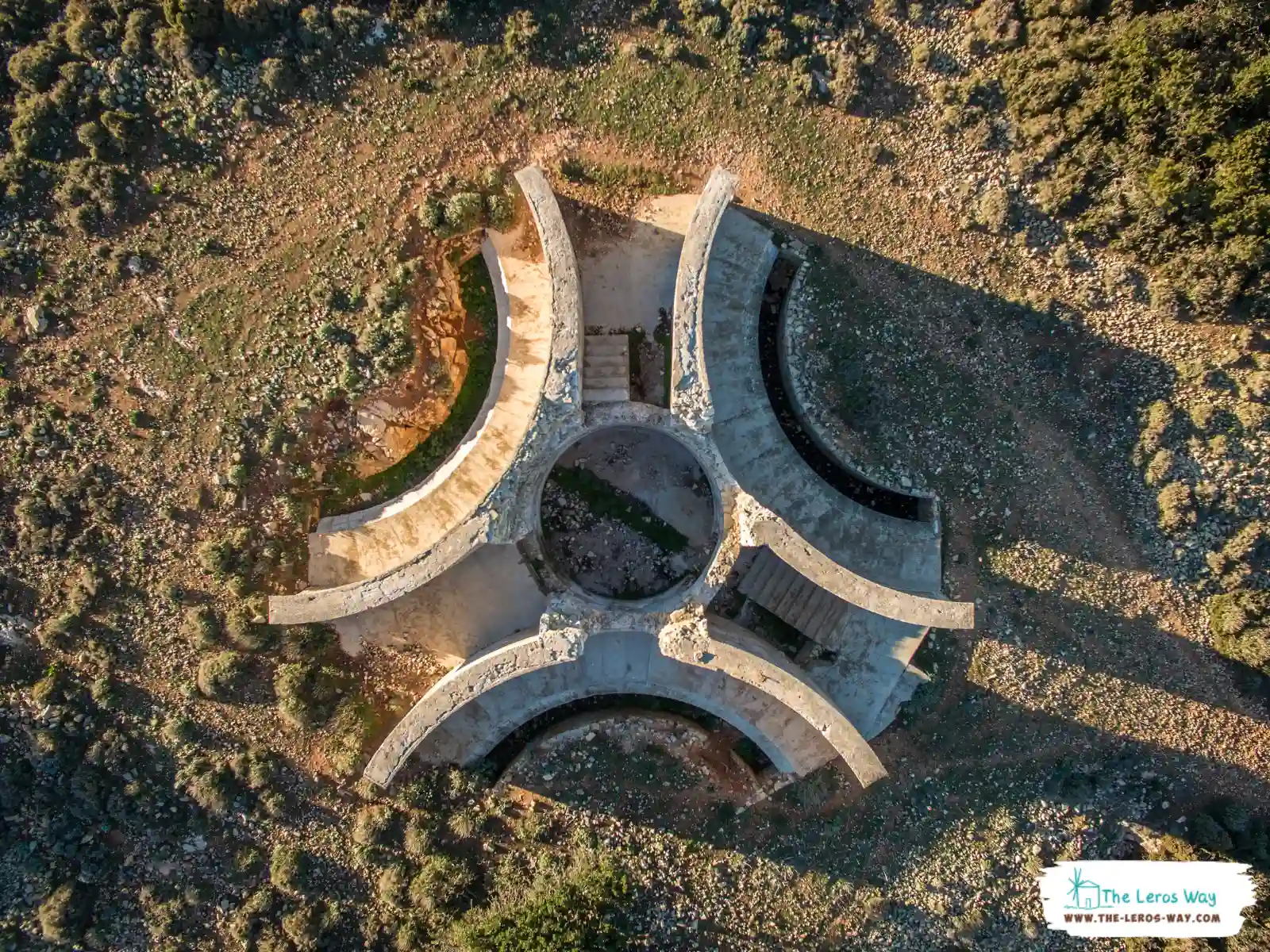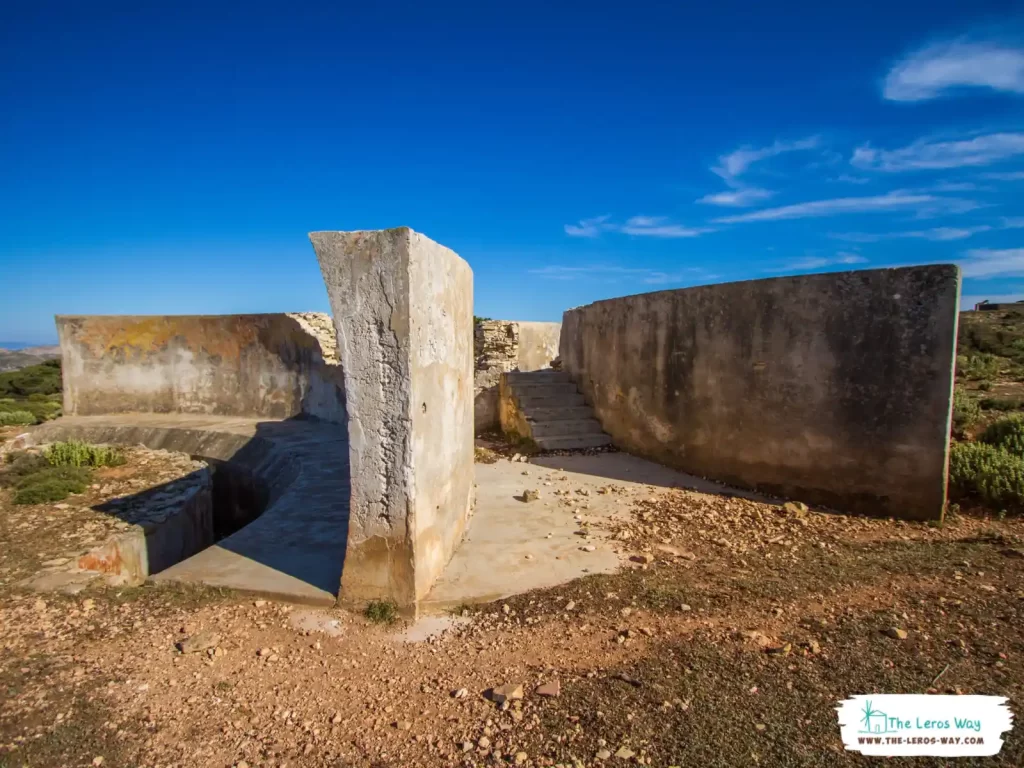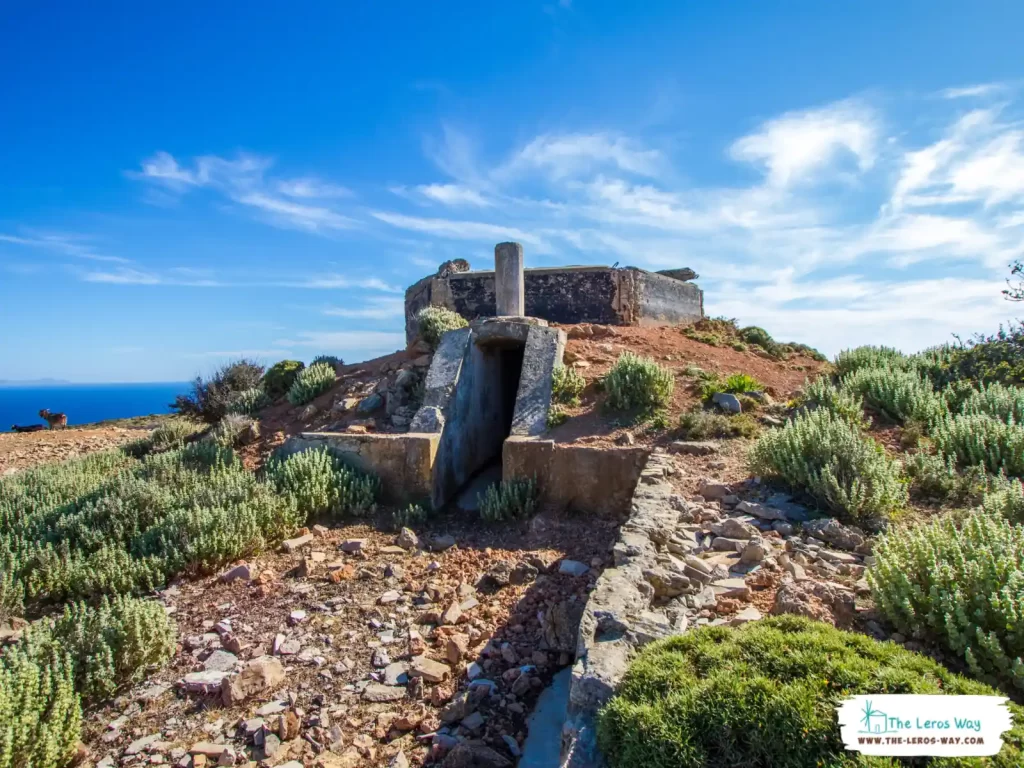Embark on a journey into the past, exploring the essential role of the Mount Patella Telecommunications Center on Leros Island during World War II. Delve into the intriguing history of its ingenious parabolic acoustic wall and aerophones, and learn how the recent restoration project has renewed interest in the island’s military past, creating opportunities for tourism and education.
The Strategic Importance of Leros Island and the Mount Patella Telecommunications Center
During World War II, the Mount Patella Telecommunications Center on Leros Island they were made in the 1930s) served as a critical communications hub, connecting observation posts, commands, and artillery networks. The island was strategically located in the Aegean Sea and served as a vital link in the chain of defense for the Axis powers. Leros Island, occupied by Italy before the war, was a critical stronghold in the Dodecanese islands, which later became a battleground between German and British forces during the Dodecanese Campaign in 1943.
Advanced Communication Systems and the Role of the Telecommunications Center
The Telecommunications Center was divided into two main sections: one that housed phone booths for receiving incoming observations and relaying orders and another section that was home to Defense Teams responsible for managing the artillery network. This advanced communication system was crucial for coordinating military operations and defenses during the war, illustrating the significance of efficient communication in times of conflict.
In addition to the main center, several smaller outposts were scattered across the island, providing additional support and coverage to the Mount Patella Telecommunications Center. These outposts enabled seamless communication between various military units and played a pivotal role in the island’s defense strategy.

The Ingenious Parabolic Acoustic Wall and Aerophones of Mount Patella
The telecommunications center’s innovative parabolic acoustic wall and aerophones, although considered obsolete today, showcase the sophisticated engineering of the era. These installations offer valuable insights into the evolution of military technology and the importance of communication in warfare strategy.
The Parabolic Acoustic Wall’s Unique Design and Capabilities
The acoustic wall, located at a height of 238 meters above sea level, was divided into three sectors of 120°, providing complete 360° coverage. The listening range of this wall was an impressive 24 kilometers, allowing for a 17-minute warning before potential enemy aircraft could reach the island. This advanced warning system was crucial in providing ample time for the island’s defenders to prepare for potential air raids or attacks.
The Role of Aerophones in Early Air Defense Systems
Aerophones were complex listening instruments that used sound to determine the distance and direction of enemy aircraft. They played a vital role in air defense during the early years of World War II, until radar technology rendered them obsolete. On Leros, there were seven airphone installations scattered across the island, with the most prominent one being at the Mount Patella Telecommunications Center.
These early air defense systems, while rudimentary compared to modern technology, were a testament to the ingenuity and resourcefulness of the engineers and military personnel tasked with protecting the island during the war.








